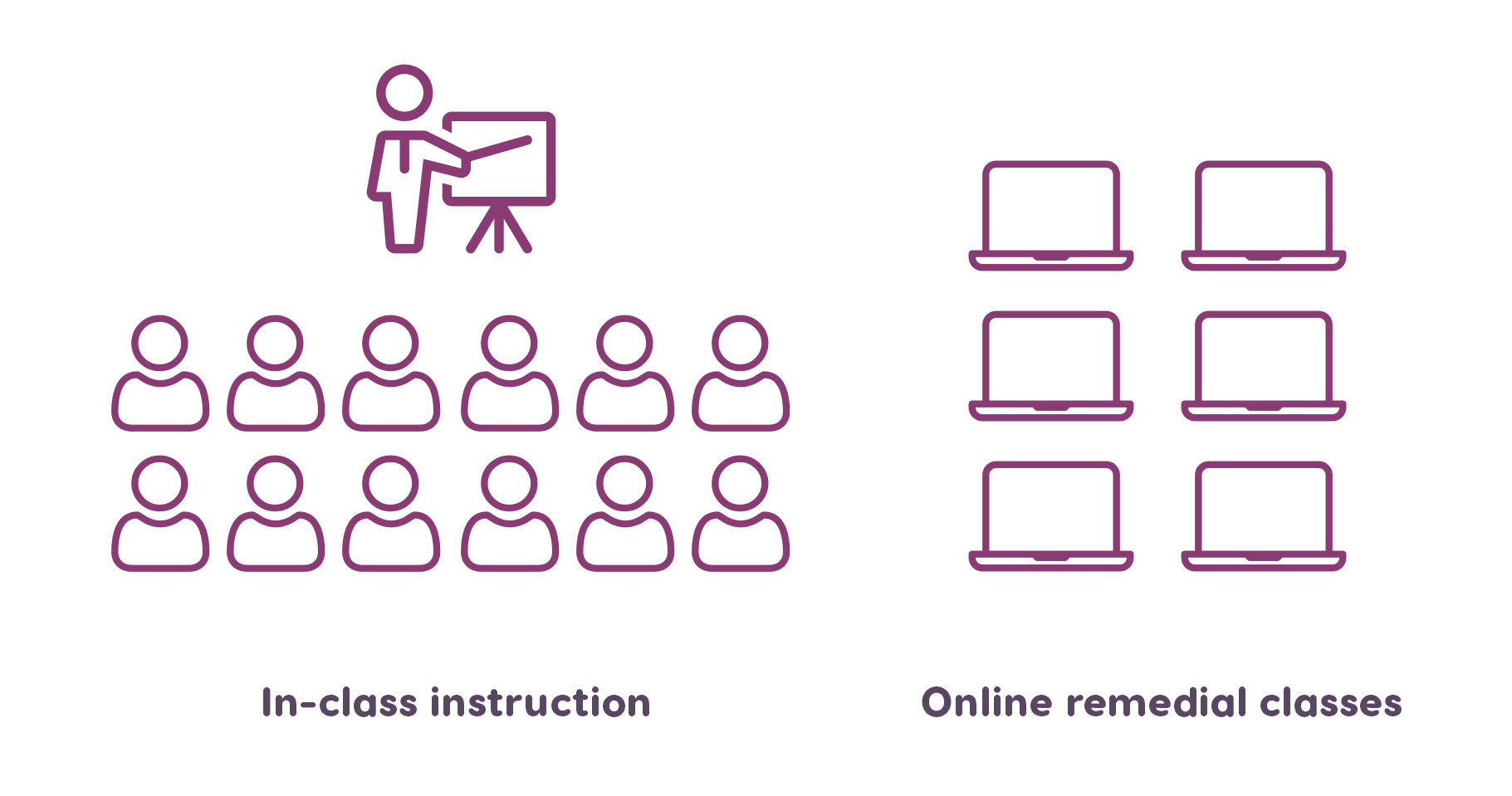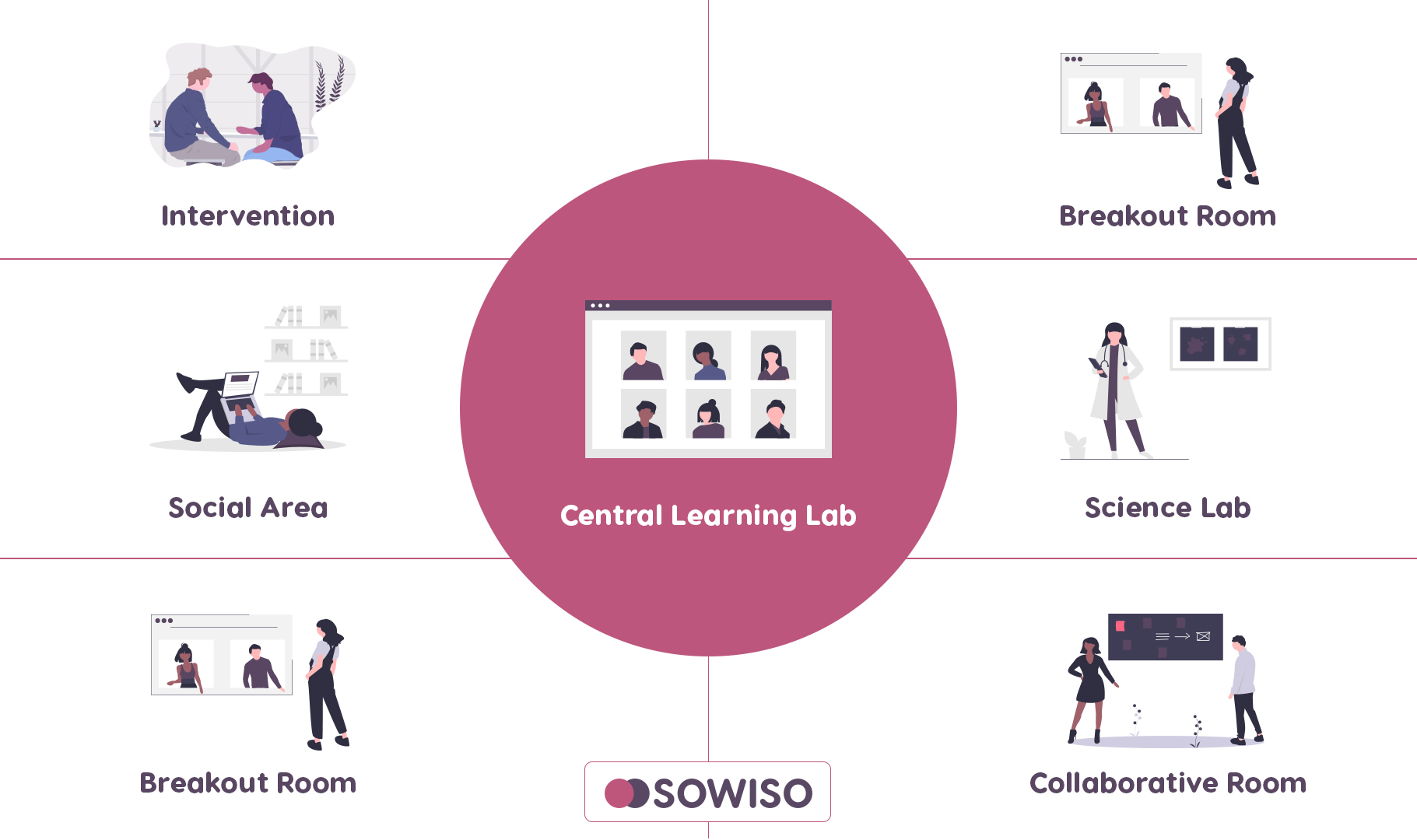Online classes or face to face classes? This seems to be one of the biggest questions that has hung on the mind of every teacher and student for the past year. There seems to be a case to be made for both. On one hand, face to face classes or in person learning is lauded because it’s less distracting, has higher course completion rates, and students actually have the opportunity to physically interact with their teachers and peers. On the other hand, online classes are praised for their flexibility, their multi-media approach to information sharing, their self-paced nature and general accessibility due to their lower enrollment costs. Depending on the teacher, student or institution you are talking to, the answer on which is better will significantly vary. And interestingly enough, the detractors from both sides often focus on the disadvantages of each approach rather than deny their counterparts advantages.
But what if we didn’t have to choose between them? What if we could settle on a learning methodology that leverages both the advantages of technology and human interaction? As we are slowly transitioning out of the pandemic and regulations are becoming less strict, it seems blended learning can very well be the answer to these questions.
As a matter of fact, for many, blended Learning has already been the solution for several years. Going by names such as “hybrid learning”, “technology-mediated instruction”, “web-enhanced instruction” and “mixed-mode instruction”, blending learning as a concept and learning methodology has been around before the turn of the 21st century. And while definitions vary, the general consensus is that blended learning, as some of its other names might suggest, is an hybrid learning methodology where face-to-face instruction is combined with technology mediated instruction during the duration of a course or module.
Over the years since its inception, several evidence based studies have been conducted to investigate the effectiveness of blended learning when compared to fully in-person instruction or fully online instruction. In 2015, a statistical analysis was conducted that reviewed the results of 37 different evidence-based research studies around blended learning. The report found that all 37 evidence-based research studies came to the same conclusion: student achievement was indeed higher in blended learning experiences when compared to either fully online or fully in-person instructional settings.
As is the case with most learning methodologies, blended learning also consists of several learning models, all of which, in one way or another, combines in-person and online instruction. For the sake of brevity, we will just introduce three of these learning models to give an general overview of what blended learning could actually look like when implemented:
As the name of this model might suggest, the face-to-face driver model is mainly based around your traditional in-person classroom instruction. Just like in your traditional classroom, students are expected to attend and participate in in-person weekly classes. However, online study resources are used to provide additional tailored help and instruction to individual students if and when they are struggling. The online resources are seen as a supplement to the learning that is happening in the classroom. The idea here being that individual students can be provided with online remedial assignments or readings based on what they are struggling with. These students are then able to work on individual remedial tasks online without disrupting the natural flow of the instruction of the in-person classes. In order words, students are provided the opportunity to work on their individual weaknesses without holding back the rest of the class.

Image: Face-to-face driver model (Hover your mouse over the image to zoom in)
In the rotation model, specific time is allotted at the onset of every course/module for personalized online instruction, teacher led small group instruction and collaborative work. In practice what this means is that teachers are able to provide more personalized instruction to their students because the face-to-face sessions consist of sub-groups of the total class size. So while the teacher is busy with providing face-to-face instruction to one subgroup of students, another subgroup is getting personalized online instruction and yet another is working on collaborative assignments. And as the module/course progresses, each subgroup rotates between the different modes of instruction and work. This means teachers are able to cover lesson material through a variety of instructional mediums, which in turn helps students perform better than when they are just exposed to one type of instruction.
Compared to the previous two models, the Flex model is more technology driven and teachers take more of the role of mentors. While the teacher is available for face-to-face instruction, the students are expected to work independently and progress through the course mainly through their online learning environment. Students will be doing most of the work in computer labs and each student’s lesson plan is tailored to their individual needs. And as the students progress through their individual lesson plans, teachers are tasked with providing face to face support and instruction on a needs-only basis. Students are also provided the opportunity to form breakout groups and do collaborative work as well. As opposed to the face-to-face driver model, all in-person instruction and guidance is to be seen as supplementary to the online study material. Because most of the content is covered via the online course, teachers can get really creative with the supplementary in-person sessions.

Image: Flex model (Hover your mouse over the image to zoom in)
Depending on your specific needs as a teacher or school, it will most definitely be the case that one of the above described models is more suitable for you than the rest. The specific advantages of each of these models will be something that we will cover in later articles, but for now we want to focus on the general advantages of adopting blended learning.
As we mentioned at the onset of this article, the bottom-line when it comes to blended learning is essentially what was summed up by the statistical study that was done in 2015. Which is that the average student performance is much higher in a blended learning environment than in a fully online or fully face-to-face learning environment. However, let’s dive a little deeper and see why exactly this might be the case.
By leveraging digital technology to save time when it comes to general instruction, teachers are then able to dedicate more time to have one-on-one face time with each of their students. Moreover, by using the processing power of online tools, teachers are also able to automate personalized feedback on a larger scale. The teacher no longer has to spend several hours to provide personalized handwritten feedback as online tools will be able to provide automated feedback which are tailored to individual student inputs. In a way, teachers are no longer constrained or forced to adjust their lesson plan for the whole class based on their weakest or strongest pupils. Rather, with the help of technology, teachers are able to provide each student the support that they need.
For the students, since they are no-longer just solely relying on the teacher for instruction, they are able to take more ownership of their learning journey and proceed through it in a self-paced manner. The high performing students are able to jump ahead of the general lesson plan of the class since they have access to online instructional material. The low performing students are able to revisit previously covered topics without having to hold up the whole class since they have access to instructional material online regarding all the content the class has already covered.
Most online tools, used in blended learning experiences, are able collect data based on student activity and performance. By having this data easily accessible, teachers are able to make more informed decisions when it comes to how to improve general student performance. Moreover, the insights gleaned, from the data provided, will also help teachers identify at-risk students and make time-appropriate interventions. Teachers are also better equipped to map out their lesson plans as they have detailed feedback in the form of data that tells them if their current way of teaching is working or not.
In general, the best way to see blended learning is as an educational approach that combines the advantages of both online and in-person instruction while leaving behind the disadvantages that come with just using one or the other. It helps improve the traditional classroom experience to meet the individual needs of the modern student while still retaining the human element of teaching which makes it all the more impactful.
Over the last 10 years, we have been working with teachers and professors in secondary and higher education by helping them introduce the blended learning experience in their mathematics and statistics classes. We do this by providing these educators with a customisable digital mathematics tool for homework and assessment that complements or supplements their in-class instruction. To learn more about how we do it, feel free to drop us a line or check out our homepage.